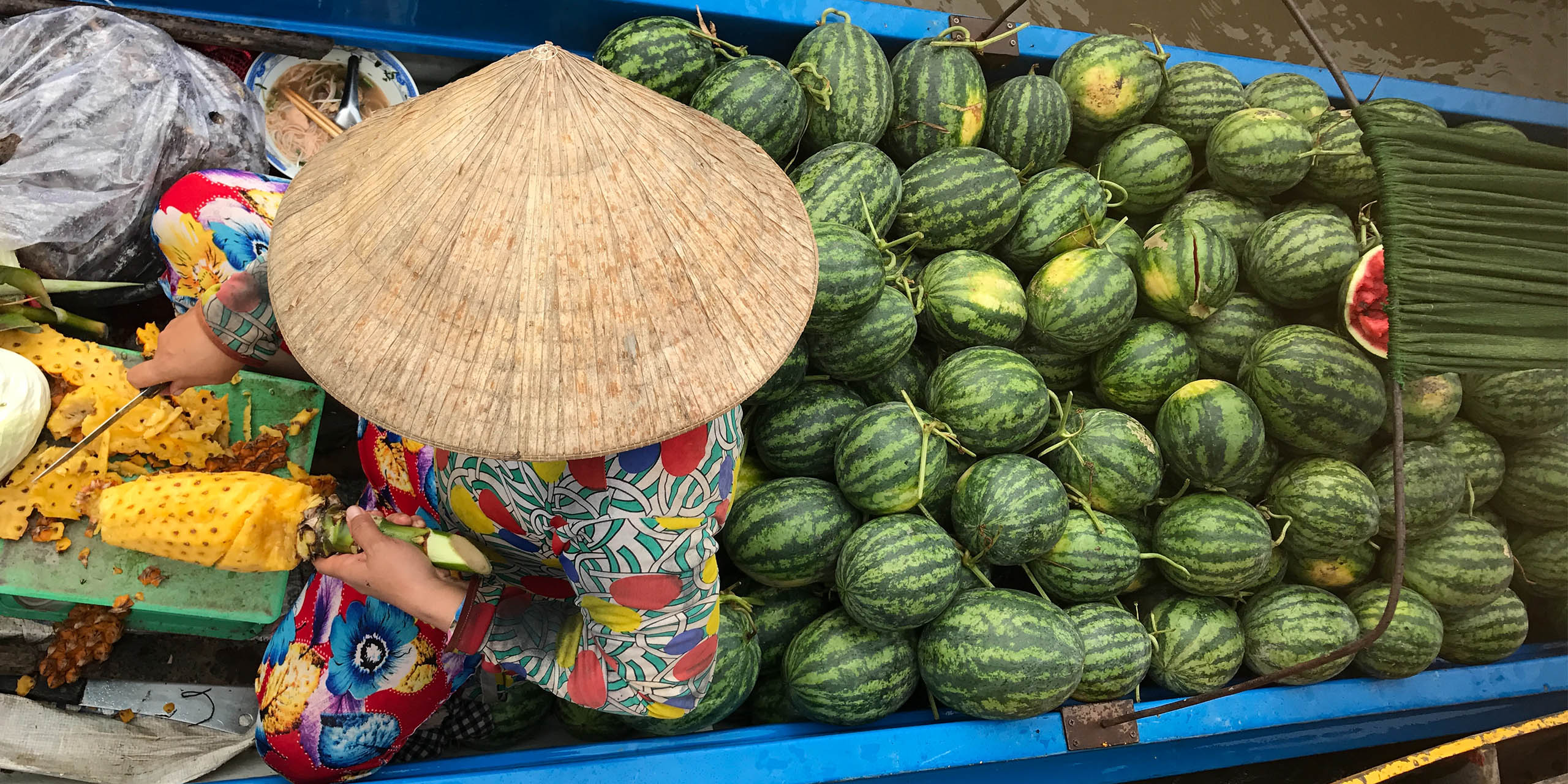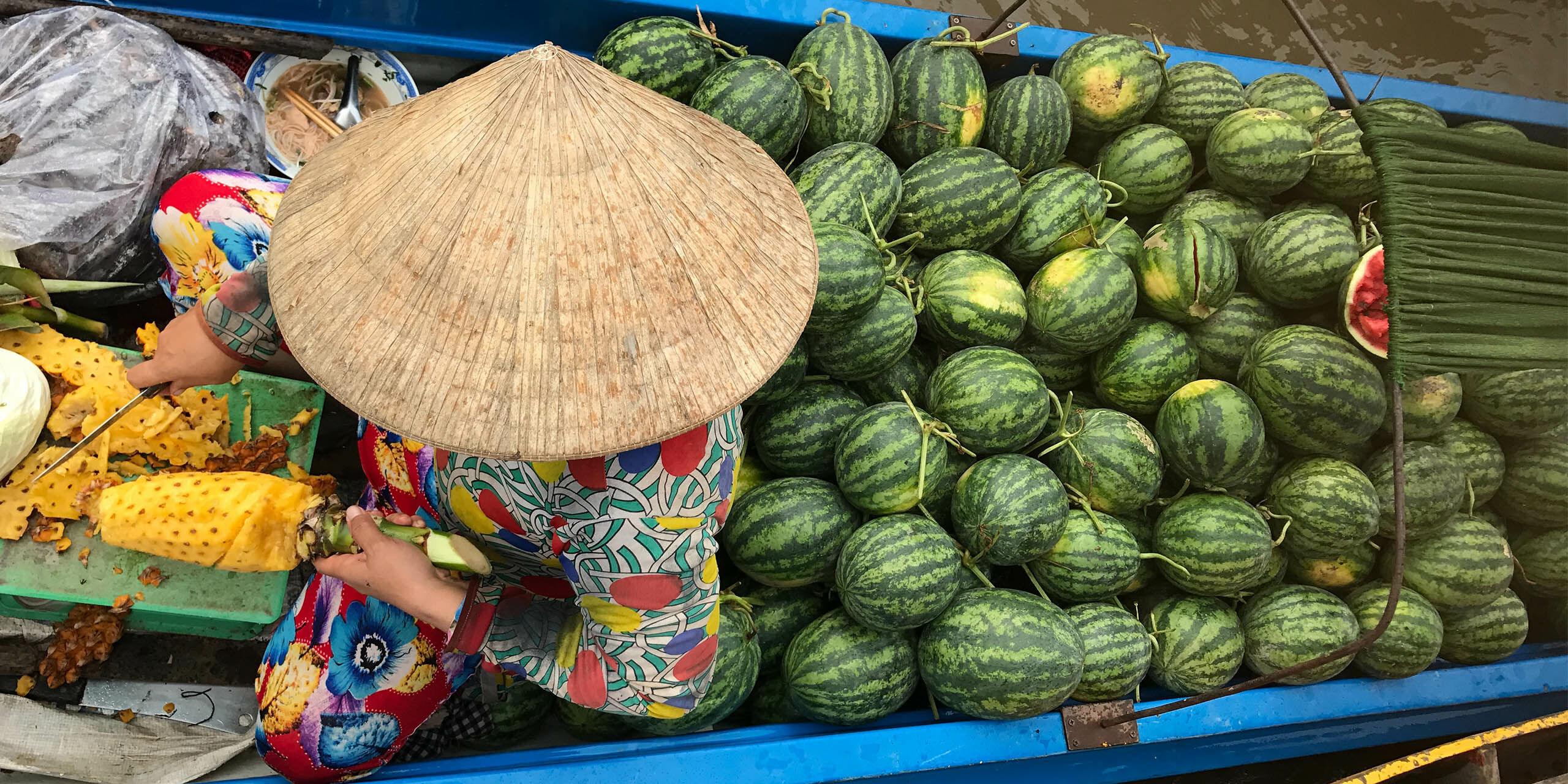
From chirruping birdsong to the burr of cicadas loitering on sugar palm trunks, the Mekong Delta in Vietnam has an alluring native soundtrack.
Less pleasing to the ear is the noise of the beat-up motorbike that has been following me around for the last 10km as I take an early-morning cycle ride in the backroads around the city of Can Tho. It’s more disconcerting that the figure perched on the Honda is in full police regalia.
“What have I done?” I ask my Tuan, my guide and an authority on the vagaries of the Vietnamese highway. Had the burst of pace I had displayed when racing a schoolboy transgressed a local speeding directive? “Don’t worry. He’s just following us around to ensure you don’t get lost. “Anyway,” he laughs. “I don’t think he has anything better to do.”
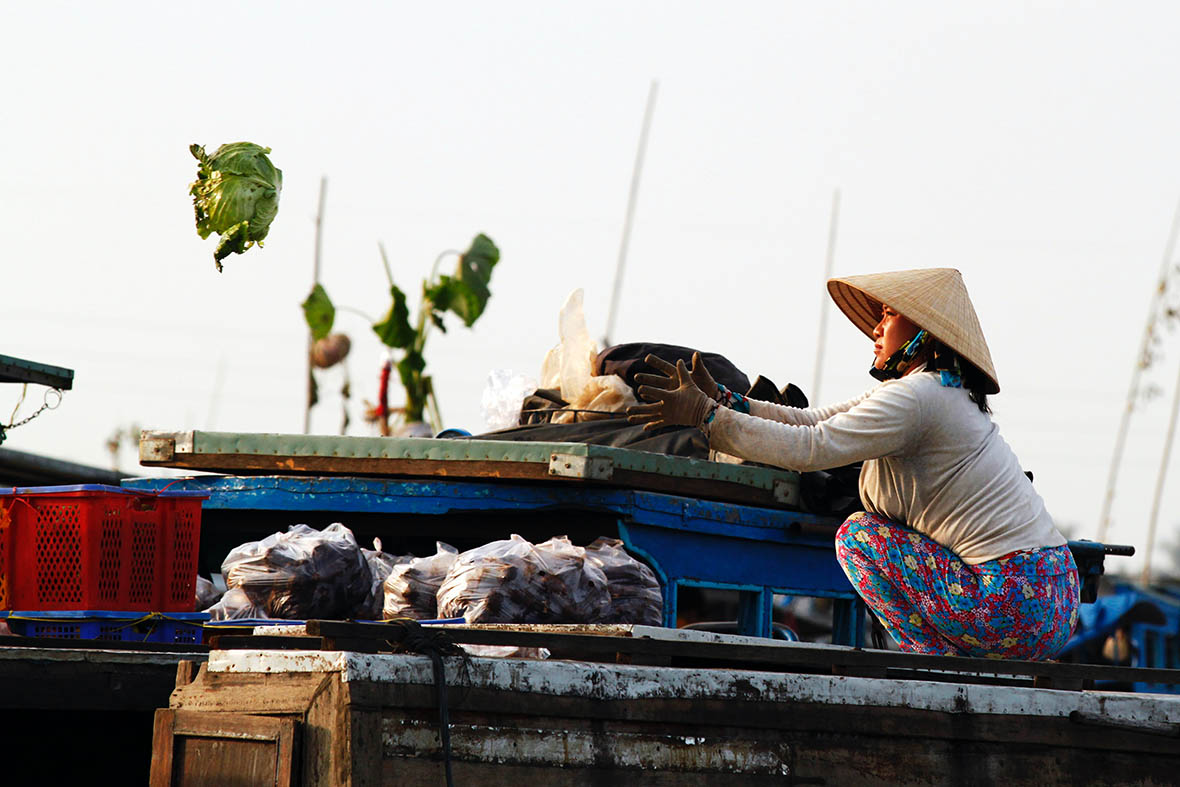
Surreal as the experience is, it is strangely in keeping with the dream-like experience of exploring the Mekong Delta’s backroads by bike.
It may be one of the most evocative names on Vietnam’s roster of attractions, but the Delta is one of the most underrated regions in the country.
The region has upped the ante in the luxury stakes in recent years. Azerai Resorts – founded by Adrian Zecha of Aman fame – has a peaceful retreat near Can Tho, the region’s biggest city.
Also notable at the highest end of the market is Aqua Mekong, the 20-cabin floating resort which plies the Mekong between Vietnam and neighboring Cambodia. For island lovers, the heavenly beaches of the Con Dao archipelago, and the sumptuous Six Senses Con Dao, are just under four hours by boat from Can Tho.
While the Delta is a late-starter as a luxury destination, the locals have always appreciated their surroundings. Its two harvests produce enough rice to feed the entire country (with a surplus), and its inhabitants have long had a reputation as being the friendliest in the land.
Over the next three days, I sample golden sunsets, idle through remote, time-warped villages and ride down narrow paths through verdant fruit orchards and past hidden pagodas.
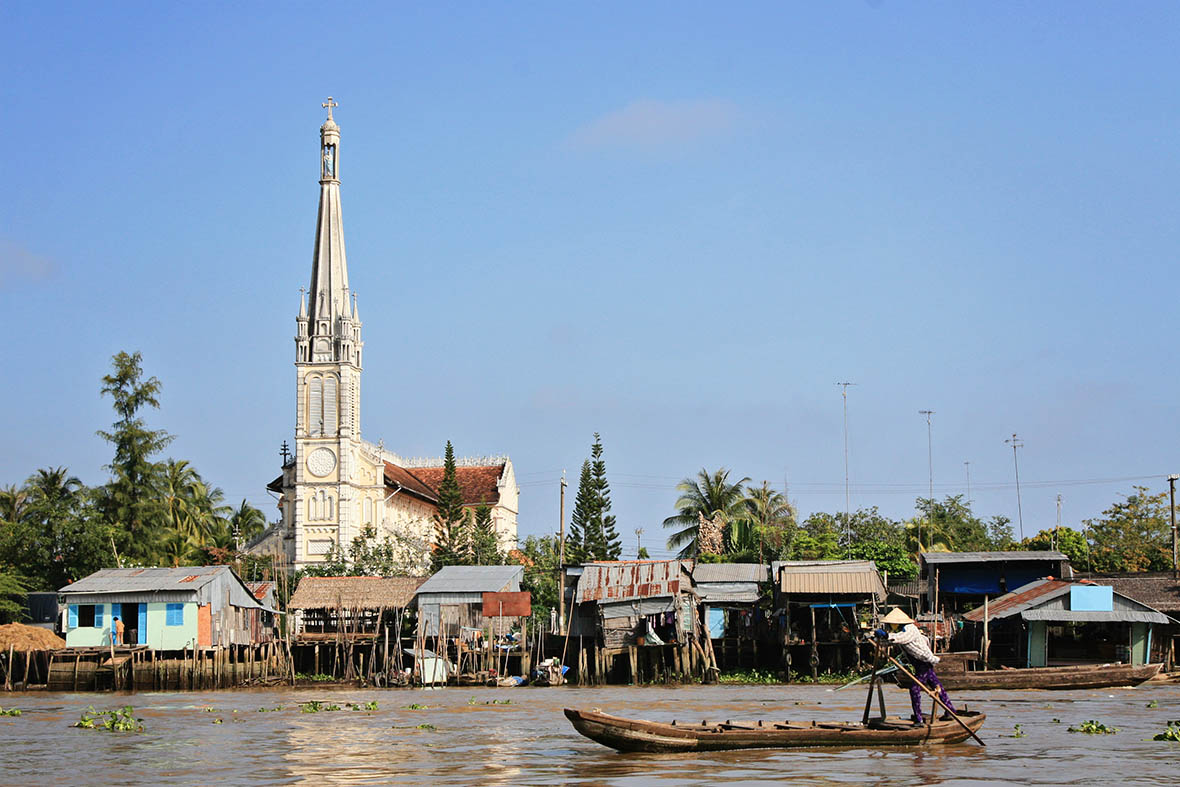
I start near the town of Vinh Long. The scenery is gorgeous. And the locals seem thrilled at the sight of a red-faced Brit in their midst. The only cloud on the horizon comes when I exhaust the last tepid drops from my water bottle and struggle to locate fresh liquid replenishment – a slight issue when you are pedalling in the searing tropical heat.
I think I have hit upon salvation when a stand selling nuoc mia (freshly pressed sugarcane juice) hovers into view through the heat haze. The owner, however, is absent.
A little further, we finally strike liquid gold. The lady manning the café manages to rouse herself sufficiently to present us with a round of drip filtered Vietnamese ice coffees and chilled water. Her job done; she sidles back to one of the café’s many hammocks.
“Mekong people are so lazy,” laughs Tuan as he drains his coffee, sparks up the latest in a long line of Craven A cigarettes and reclines in his own suspended snoozing sling. “They’ve got so much here already they don’t have to work that hard.”
As a Delta native himself, Tuan’s comment is founded not in scorn but pride. Anyway, most visitors love the languid pace. That’s why I’m lying here in this hammock thanking the guardian angel of chunky cyclists for guiding me to this frigid bottle of water.
Careless brushes with dehydration aside, the area offers fantastic scope for exploration by bicycle. It is pancake flat, making it easy to negotiate, while its backcountry network of waterways, quiet lanes and traditional villages are a world away from the nation’s more frazzling attractions.
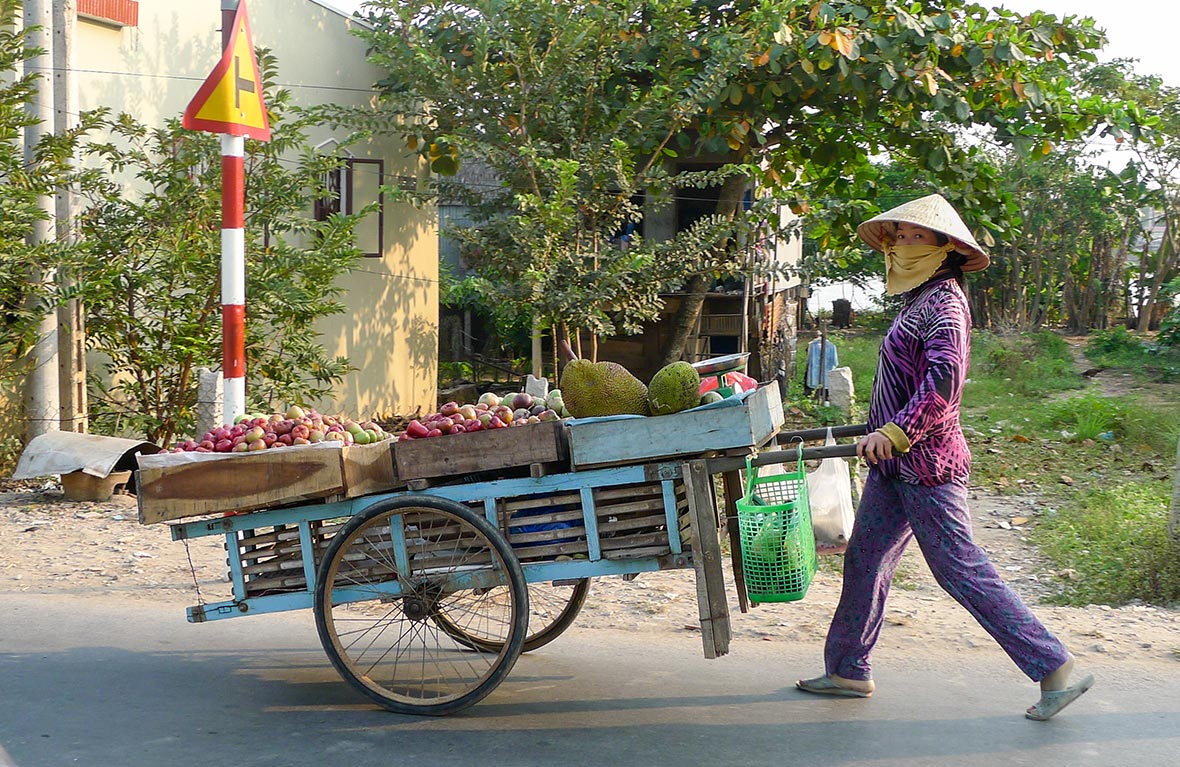
The route we planned out in Ho Chi Minh City sticks almost exclusively to the backroads and narrow tracks barely wide enough to let two bikes pass in comfort. Emancipated from the scourge of the Vietnamese highway – the fume-belching, horn-honking truck – it is the ideal way to ease into the rhythm of rural life.
The flow of Delta life is best appreciated at a languid pace anyhow. Indications of the region’s natural prosperity are everywhere. Giant propaganda posters hanging next to fields depict rosy-cheeked workers carting wheelbarrows piled high with spring onions. Drivers veer all over the road as their weathered Hondas struggle to carry the weight of baskets filled with durian and jackfruit. I begin to lose track as Tuan recounts the bounty harvested from the passing landscapes.
It is a great ride. The most scenic stretch of the journey comes on the first day after a lunch of DIY rice-paper rolls with elephant ear fish, clay pot pork and fresh fruit at a historic garden house near Cai Be. We leave the paved tarmac behind to plot a course over rickety bridges, through leafy forest glades and alongside waterways. Here local fisherpeople can be seen mending their nets and loading their boats with produce to sell at the many floating markets in the region.
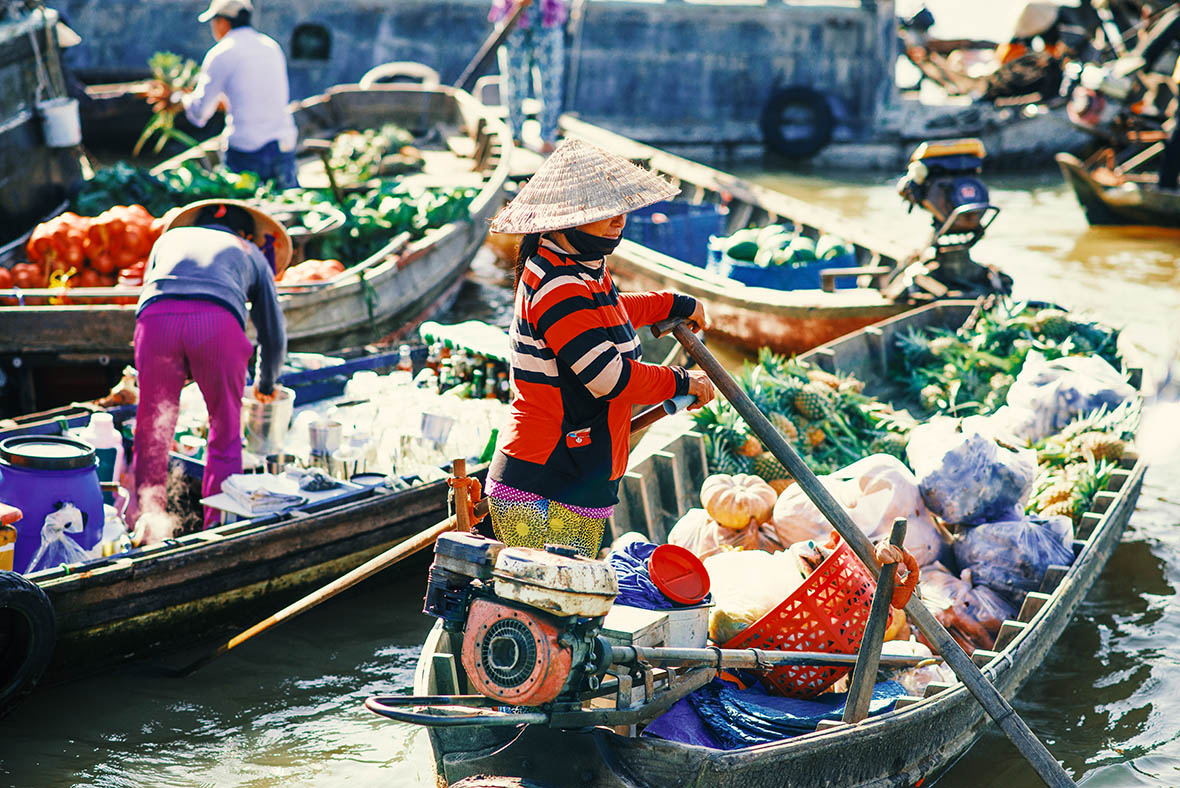
The following morning, I awake at the rather unsociable hour of 6.30 am to witness the early-morning mercantile action at Cai Be’s floating market, one of the biggest remaining in the Delta. My remaining inertia from the early start disappears amidst the noisy trade on the murky Mekong waters.
Rickety looking rowboats are piled high with tropical fruits and produce, and the air is alive with the sound of traders brokering deals. Plotting a course between the boats are mobile noodle vendors, their crafts swaying unsteadily beneath the weight of giant, steaming terrines.
Back on dry land, I narrow miss out on decapitation descending from a bridge and overestimating the height of a rusting corrugated roof. Although the rest of the ride passes without further mishap, the early start and the formidable temperatures have worn me out. I’m glad to make it to the sampan that will glide me down the Mekong to Can Tho. With the cycling over for the day, I can kickback.
A brush with the long arm of the Vietnamese law waits the following day. But for now, I’m keeping it legit. I drain an icy cold can of 333 beer, reflect on my odyssey and drift off to sleep while the boat eases down the river.

